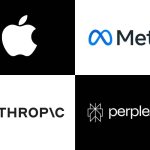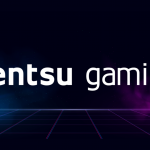The following article was written by Chief Operating Officer of Islay Tech, Khanusha Shereen Neesha
As a content creator, how do you stand out in a world where consumers are exposed to a plethora of content and advertisements on the daily?
Crafting excellent content is a foolproof way of cutting through the noise. With a sound content marketing strategy, you can significantly boost your traffic, engagement, and brand recall. This involves not only publishing quality content but also making sure it reaches your target audience.
There are many means to do it—from SEO to paid social media marketing, influencer marketing and more. There are also simple, effective and inexpensive ways to get more eyeballs on your content without breaking the bank. This includes utilising social share buttons.
In this post, we’ll take a deep dive into this key feature and how you can benefit from it.
What are social share buttons and does your website need them?
If you’ve ever consumed content online, you’ve most likely seen these share icons on the websites you’re visiting. There’s a special space dedicated to social share buttons, imploring readers to share content on their preferred social media or messaging platform.
Some are in-your-face, some go along with you as you scroll through a page, and some quite small they are barely noticeable. Regardless of placement, size or style, this feature remains a prominent fixture in almost every website.
Social share buttons enable readers to conveniently share content without the hassle of leaving the website. Simply adding these buttons to your pages and posts allows you to expand the reach of your content, increase traffic, and generate more engagement. The best part is that integrating social share buttons to your blog posts, landing pages, and web pages does not take much effort at all.
According to an iSLAY analysis conducted on 100,000 URLs, the data reveals that the habit of sharing news on social platforms decreased in 2019. Instead, there has been a rise in the use of messaging apps for news. Many users prefer to copy-paste directly to Facebook or share the URL via a private conversation. One can consider this action as the online equivalent of word-of-mouth. Referred to as “dark social,” this private sharing behavior has increased over the years, especially in the publishing industry.
With that in mind, do websites still need social sharing buttons?
Let’s be honest. If you’re not engaging your readers and subtly encouraging them to share your content, your reach may not only fall short but your content will also create less than optimum impact.
Many of us content makers have learned the hard way that it is not enough to just create apiece content, jazz it up with some thumb-stopping visuals, and click publish. Whether it’s through likes, recommendations, tweets, pins, or shares, it has become a norm for brands to ask their content viewers to engage and spread the word.
Too many choices! Too many decisions!
The market today is saturated with tons of sharing methods. In the space of online publishers around the world, there is an estimate of 70 different types of share buttons. This wide range of options can be overwhelming and although you can choose nearly any of them for your website, some platforms are more relevant and effective than others.
There are also other factors you need to consider such as the type of buttons used; the number of buttons displayed;their placement on the webpage; and the popularity of each social network platform; while simultaneously factoring in language, culture, and even legal regulations.
For example, Facebook share buttons, that are popular in Europe and America, are much less used in online portals in Russia, Ukraine, and Belarus. Meanwhile, popular social media platforms such as Facebook and Twitter remain banned in China asWeChat, its most prominent messaging and social media platform, has started expanding its functions to allow users to share their moments on both networking sites.
In Southeast Asia, there are many competing messaging apps but WhatsApp remains as one of the most widely used messaging platforms. You can’t go anywhere without hearing someone say “WhatsApp me” or “Are you on WhatsApp?” Hence, there is no question why the platform’s share button is commonly used in communicating and sharing content.
Popularity of Share Buttons
Source: iSLAY, Test of the share buttons role in content distribution, test of 100,000 URLs
How to get the most out of social share buttons?
Now if you’re among the content creators that are already using this feature but not achieving your desired results, keep on reading. With plenty of options and several factors to consider, how can you optimize the effectiveness of your social share buttons? There has been a ton of research conducted to produce data that’s available online to help you make the most effective decision to increase the probability of your readers sharing your content.
It is also important to remember that when online users come across interesting content, but are discouraged by the choice and placement of the share buttons, they resort to content sharing via email or messengers. Although social media usage is ubiquitous, online users recognize email as a safe and private way of sharing content.
Similarly, online users have been using instant messaging services to share content from as early as 1996. Brands such as ICQ and Tlen are replaced by WhatsApp and Messenger, and in some regions of the world, WeChat. The role of instant messaging in the process of sending articles, photos or videos is not weakening but is growing along with social media platform usage.
Here are a few ways you can strategically use social share buttons to drive your reach, traffic, and engagement:
Choosing the right size
Does the phrase ‘the bigger the better’ apply in this instance? While it may be more aesthetically neat to have extremely small buttons placed at the side of your page, this may cause your website visitors to completely miss them. On the other hand, having too many large buttons spread across your pages can overwhelm the user to the point of ignoring them.
Ensure they’re all the same size in terms of height, width, and resolution. It’s also important that there’s ample space between each button so they’re easy to interact with.
Picking the right placement
Let’s talk about your social share button placement. The popular options include the top and the bottom of a post; on the left or right of post and sometimes in-line with the post. While there is no standard, one-size-fits-all solution when it comes to this,, understanding your readers and relying on reliable data points can help. The more prominent your social share buttons are, the higher the probability of readers clicking them.
Some online users share content right after reading the headline. On the other hand, others need to read through the entirety of it before deciding if it’s worth sharing. In the first scenario, time is important so social share buttons placed on top of the article works better. For the second type of content viewer, placing the buttons at the bottom makes more sense.
Also take into consideration your content type. Do you usually publish long-form posts, list-form articles, and other text-heavy content? Let’s face it. Today’s Internet users often scan and skim through content. Many would simply browse through key points and share the article without reading the entire post. Hence, positioning your social share buttons on the top or side of your page is ideal for scrollers looking to share your content.
Simply put, there are different patterns in which people interact with online content. There are areas of your website your audience pays less attention to. You can use analytic tools like iSLAY to find out and understand how your readers navigate your website or consume your posts.
iSLAY scroll depth (top) and scroll speed (bottom) to determine user engagement at each depth
Here are a few key questions you may ask to help you decide: How does my target audience interact with my content? Are my share buttons visible? Are they easily clickable? Do they interfere with site navigation?
Ultimately, knowing your audience and considering their user behavior are important factors to consider when choosing a placement to drive the best results.
Determining which buttons to use
Observing the changes in the way information is shared over the Internet, it is visible that the number of shares via mobile channels is increasing, making, messengers and e-mails an equally easy sharing option alongside Facebook. As the entire media market moves towards mobility, the role of buttons that enable sharing content via WhatsApp and Messenger will grow too.
Online publishers should consider the capabilities of these small buttons in their strategy. After all, this is one of the elements of building a brand through social media channels, even if you don’t do social media marketing.
It can be easy to assume that the more options you give your readers, the better. Besides, the whole point of having social share buttons is to help your readers easily share your posts on social networks they use the most, right? Unfortunately, that’s not always the case.
Avoid cluttering your website with too many social share buttons. It has the potential to complicate the decision-making process and as a result, diminish the usability of the feature. Moreover, it can significantly slow down your website. We all know a poorly designed, slow-loading page is a formula for bad user experience. In a culture where instant gratification has become the norm, a few seconds delay in page loading time could affect your ability to captivate and engage your audience.
So which are the best social share buttons to include? The answer to that depends on the demographics of your target audience.. Check your website analytics through iSLAY and find out which social media platforms bring in traffic and then research your target audience to see which networking sites and messaging applications they spend the most time in. These are the crucial information you need to to define a successful strategy.
Finding out what works and what doesn’t
There is no better way to find out which social share buttons will perform better than running tests. When in doubt, generate accurate, actionable data and optimize accordingly.
In the context of social share buttons, two things are important. First of all, learn how often these buttons are clicked and what effect each click brings. What is your objective in adding social share buttons? Let’s say your goal is to bolster your unique website visits and improve overall traffic, then each click should turn into a share and each share should attract new visitors to your website.
Your analytics should reflect which social buttons generate more traffic. It also reflects which buttons barely get clicked on. From there, you can consequently adjust your strategy. With tools like iSLAY, you are able to generate key information such as reader psychographic data, and make data-driven decisions.
Creating high-quality original content remains the key to driving reader engagement and sharing. After all, online users will find a way to share remarkable content they resonate with. Having social share buttons simply makes that process easier for them.
However, haphazardly adding these buttons to your website and blog posts won’t cut it. You need to put in the time and effort to understand your audience and optimise your social share buttons to get great results.
MARKETING Magazine is not responsible for the content of external sites.









